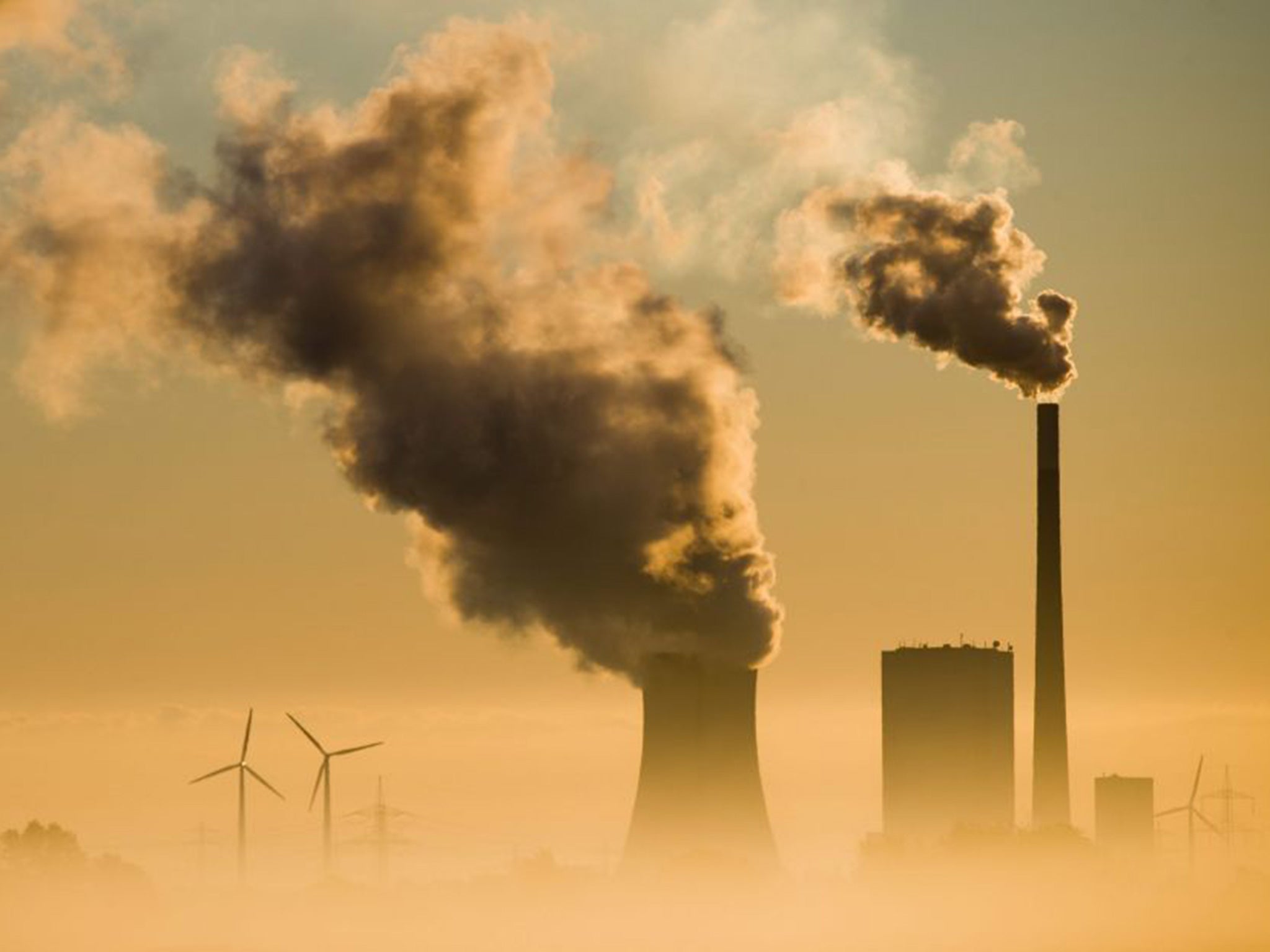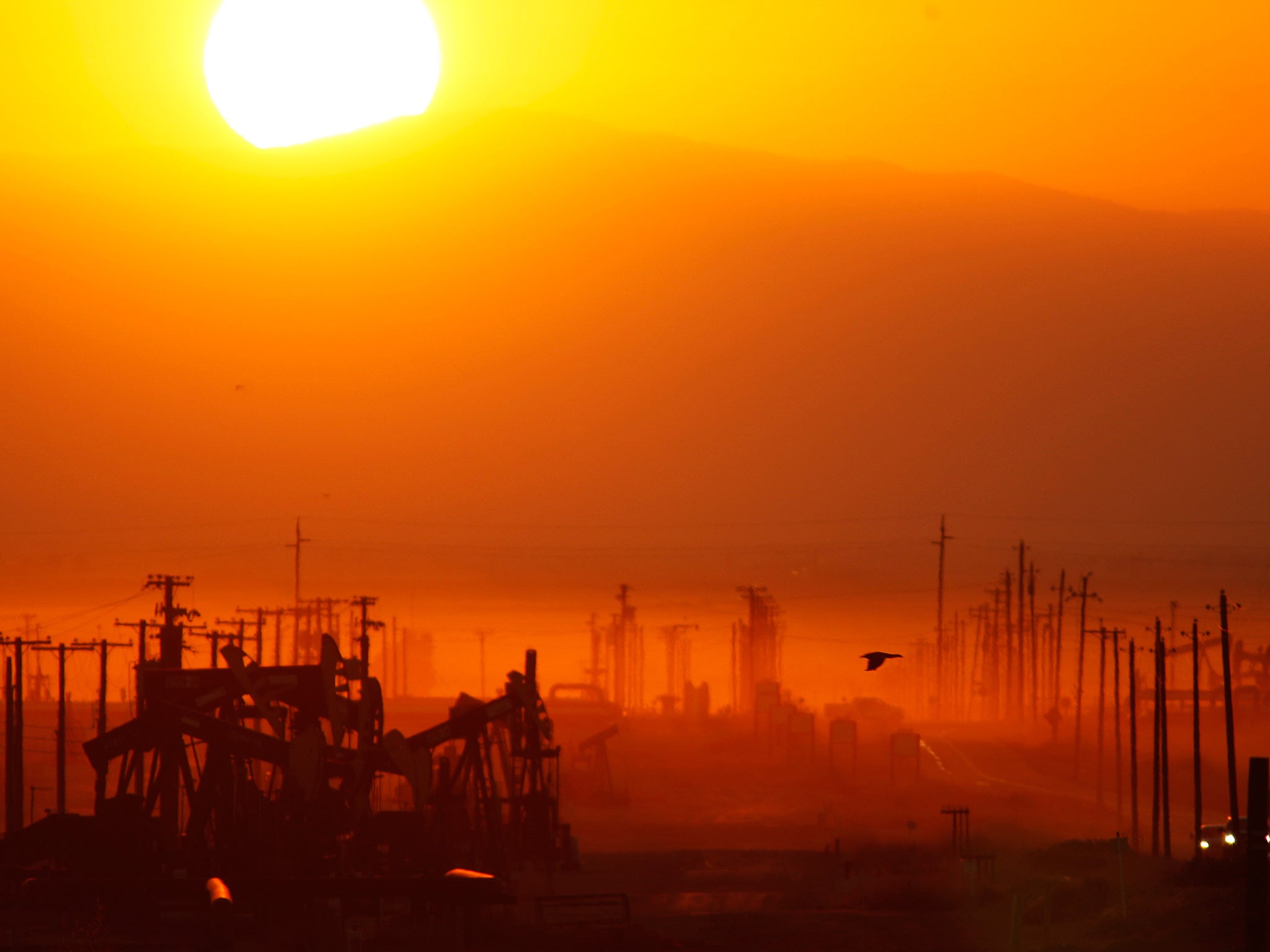Global warming: World already halfway towards threshold that could result in dangerous climate change, say scientists
The world is heading towards unchartered territory at 'frightening speed'

The world is halfway towards the threshold that could result in dangerous climate change, scientists have warned, after revealing that average global temperatures have recorded a rise of one degree Celsius for the first time.
Record warm temperatures measured in the first nine months of this year mean that the world has already reached the halfway point towards the arbitrary “threshold” of a 2C increase on pre-industrial levels judged to be potentially dangerous for climate change, the Met Office said.
The world is heading towards uncharted territory at “frightening speed” according to the World Meteorological Organisation (WMO).
Global average temperatures broke through the 1C barrier as the concentration of man-made greenhouse gases in the atmosphere reached another new record, the climate scientists said.
Latest figures on greenhouse gas concentrations show that levels of carbon dioxide, methane and nitrous oxide from industrial, agricultural and domestic activities reached record levels – with global average concentrations of carbon dioxide in spring 2015 crossing the 400 parts per million barrier for the first time.

“It means hotter global temperatures, more extreme weather events like heatwaves and floods, melting ice, rising sea levels and increased acidity of the oceans. This is happening now and we are moving into unchartered territory at a frightening speed,” said Michel Jarraud, the secretary general of the WMO.
“Every year we report a new record in greenhouse gas concentrations. Every year we say that time is running out. We have to act now to slash greenhouse gas emissions if we are to have a chance to keep the increase in temperatures to manageable levels,” Mr Jarraud said.
The findings came out ahead of the Paris meeting on climate change designed to agree on a binding international treaty on carbon emissions that are aimed at limiting global warming to a maximum of 2C above pre-industrial levels.

Temperature data gathered from around the world from January to September reveal that they average out at 1.02C above the long-term average between 1850 and 1899. It means 2015 is highly likely to be the warmest year on record and the first to breach the 1C temperature milestone towards the 2C threshold, Met Office scientists said.
Climate researchers believe that an increase on global average temperatures of 2C above pre-industrial levels would take the world into unchartered territory, with potentially unforeseen consequences in terms of extreme weather and climate feedbacks that could accelerate the melting of polar ice and sea-level rise.
A continuing rise in greenhouse gases, notably carbon dioxide, due to human activity is a major contributing factor to the record warm year along with a strong El Nino developing in the Pacific Ocean – a periodic, natural variation in sea-surface temperatures that can exert a global impact on the weather.

“We have seen a strong El Niňo develop in the Tropical Pacific this year and that will have had some impact on this year’s global temperature,” said Stephen Belcher, director of the Met Office Hadley Centre near Exeter, which analysed the HadCRUT global temperature dataset with the Climate Research Centre at the University of East Anglia.
“We’ve had similar natural events in the past, yet this is the first time we’re set to reach the 1 C marker and it’s clear that it is human influence driving our modern climate into uncharted territory,” Dr Belcher said.

The current El Nino, which is almost certainly to be among the top three strongest events since 1950, is likely to continue into the first few months of next year which means that 2016 is also likely to be a warm year, continuing the trend of rising global average temperatures that continue to fluctuate due to natural variability, the Met Office said.
“This year marks an important first but that doesn’t necessarily mean every year from now on will be a degree or more above pre-industrial levels, as natural variability will still play a role in determining the temperature in any given year,” said Peter Stott, head of the Met Office’s climate modelling and attribution.

“As the world continues to warm in the coming decades, however, we will see more and more years passing the 1 C marker – eventually it will become the norm,” Dr Stott said.
Scientists estimate that about 2,900 gigatonnes of CO2 can be emitted into the atmosphere before the 2C threshold is likely to be breached. Industrialised nations have already about 2,000gt which means that the world has used but about two thirds of its 2C “budget” of fossil fuels, the Met Office said.
Sea levels are lagging behind because of the natural inertia of the climate system, with 20 centimetres of global mean sea level rise observed since pre-industrial levels. This is about on third of the rise that is expected into the next century even if we are able to keep to within 2C temperature rise, the Met Office said.
“Research suggests it is still possible to limit warming to 2 C above preindustrial levels. However, the later that global CO2 emissions peak – the faster subsequent emissions cuts would need to be in order to keep global temperature rise below the limit,” it said.
Missed targets: UK energy policy
Energy Secretary Amber Rudd has come under fire over a leaked letter warning the UK is set to miss legal targets on renewable energy.
In the letter, published by Ecologist magazine, Ms Rudd has acknowledged to colleagues that the UK is set to fall short of its European Union target to source 15 per cent of energy from renewable sources by 2020.
The letter also appears to suggest ways of meeting the target by buying hydropower from Norway, purchasing clean energy from other EU states, doing a deal with a European country which has over-achieved on its targets and even negotiating for flexibility in the goal.
The leak has prompted an angry response from green campaigners, warning it demonstrates the Government’s “incoherent” energy policy, which has seen cuts to subsidies for renewables such as wind and solar power.
A spokesman for the Department of Energy and Climate Change said they did not comment on leaked documents.
Join our commenting forum
Join thought-provoking conversations, follow other Independent readers and see their replies
Comments